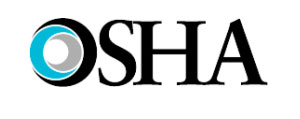Occupational Health, Safety and Regulatory Issues: Precaution and Worker's Safety
A growing body of evidence indicates that exposure to some of these engineered nanomaterials can cause adverse health effects. Based on preliminary toxicological data, prudent practice dictates controlling occupational exposure to nanomaterials (NIOSH, 2012).
According to OSHA, employers should use a combination of the following measures and best practices to control potential exposures:
Engineering Controls
- Work with nanomaterials in ventilated enclosures (e.g., glove box, laboratory hood, process chamber) equipped with high-efficiency particulate air (HEPA9) filters.
- Where operations cannot be enclosed, provide local exhaust ventilation (e.g., capture hood, enclosing hood) equipped with HEPA filters and designed to capture the contaminant at the point of generation or release.
Administrative Controls
- Provide hand washing facilities and information that encourages the use of good hygiene practices.
- Establish procedures to address cleanup of nanomaterial spills and decontamination of surfaces to minimize worker exposure. For example, prohibit dry sweeping or use of compressed air for cleanup of dusts containing nanomaterials, use wet wiping and vacuum cleaners equipped with HEPA filters.
Personal Protective Equipment (PPE)
- Provide workers with appropriate personal protective equipment such as respirators, gloves and protective clothing.
Medical Screening and Surveillance
- Make available medical screening and surveillance for workers exposed to nanomaterials if appropriate.
- Review medical surveillance requirements under OSHA standards (e.g., Cadmium, Respiratory Protection). https://www.osha.gov/Publications/OSHA_FS-3634.pdf
Recommended Exposure Limits
- OSHA recommends that worker exposure to respirable carbon nanotubes and carbon nanofibers not exceed 1.0 micrograms per cubic meter (µg/m3) as an 8-hour time-weighted average, based on the National Institute for Occupational Safety and Health (NIOSH)proposed Recommended Exposure Limit (REL).
- OSHA recommends that worker exposure to nanoscale particles of TiO2 not exceed NIOSH's 0.3 milligrams per cubic meter (µg/m3) REL. By contrast, NIOSH's REL for fine-sized TiO2 (particle size greater than 100 nm) is 2.4µg/m3.
